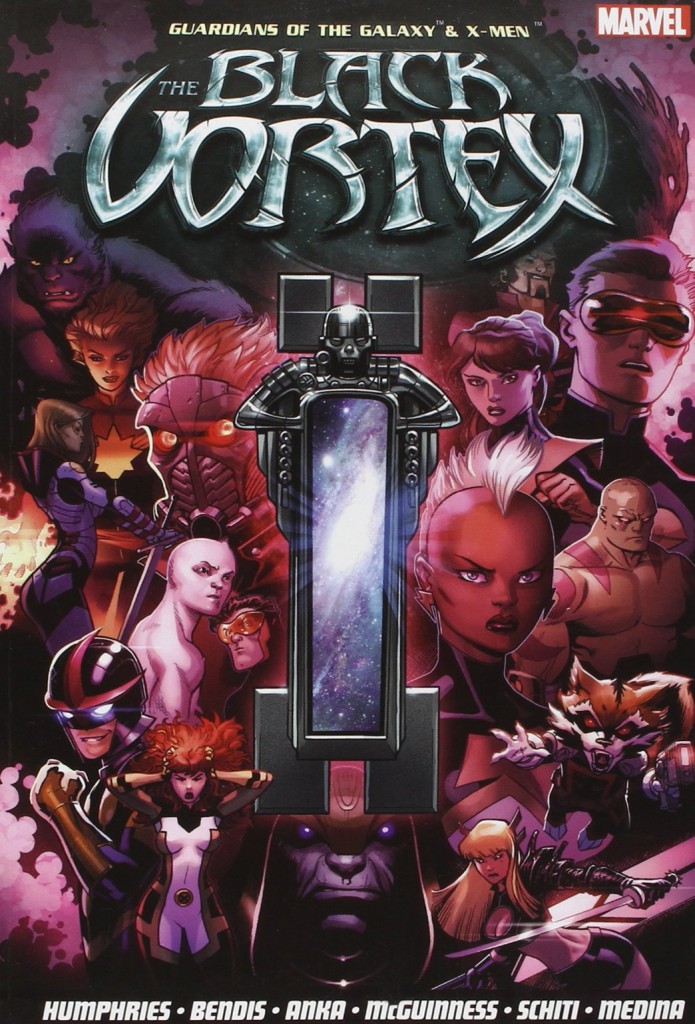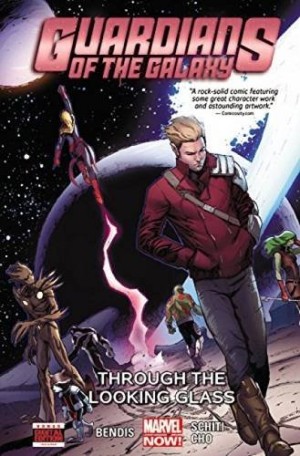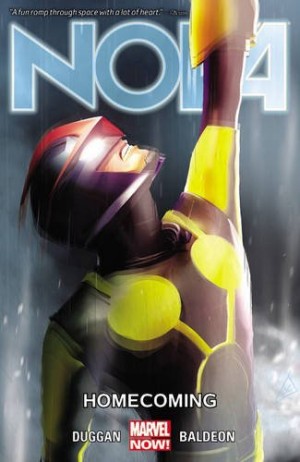Review by Ian Keogh
Black Vortex is space adventure on a grand scale, featuring the Guardians of the Galaxy, Captain Marvel, Nova, and the X-Men, and originating from events depicted in the Legendary Star-Lord. There, as explained in the opening chapter, a deposed despot calling himself Mister Knife acquired the Black Vortex of the title, an inordinately powerful form of mirror, and gathered an intimidating group of allies. Oh yes, and he happens to be the father of Peter Quill, Star-Lord, and it was Quill and his Guardians partners who deposed him. Having witnessed how the Black Vortex transforms people, Star-Lord and his girlfriend Kitty Pryde take it.
Originating with the Celestials, the Black Vortex unleashes potential, transforming into the ideal version of what they may become those who stand before it and wish it. It leads to an ethical debate among the gathered heroes as to whether they should, in essence, power up, while those who take that option also experience an increased awareness and a desire to transform others.
Between them writers Sam Humphries and Brian Michael Bendis perpetuate the excitement, throwing in curveball after curveball, at least until the midway point, but the plot gradually sinks thereafter, leading to a conclusion that renders much of what occurs meaningless. There’s also a gaping plot flaw. Having used Kitty Pryde’s abilities to steal the Black Vortex, much sturm and drang would have been avoided by abducting Mister Knife in the same fashion. And with Magik on the team, there are places to stash him that his allies can’t locate.
Most of what there is to admire occurs in the earlier material. The revelation for Hank McCoy, the temptation of Ronan, the manipulation of Thane, the sheer seat of the pants methods of Star-Lord, and Kitty Pryde’s voice of common sense all appeal. Some characters are lost in the shuffle, barely utilised beyond a chapter of their own title. This applies to Nova and Captain Marvel, so their overall inclusion smacks of more marketing, hoping their regular readers will be tempted by the larger crossover, and these are among the weaker chapters as they’re the comic equivalent of the commercial plane’s holding pattern.
There’s a fantastic selection of artists involved, and it’s quite the situation when Ed McGuinness is the weakest of the bunch. He’s allocated the opening and closing chapters, and the content of neither really suits his powerful style. David Baldeon, Javier Garrón, David Lopez, Mike Mayhew, Paco Medina, Andrea Sorrentino and Valerio Schiti (sample art) are all excellent, but a consistent depiction of characters drawn by more than one, such as the Kree Supreme Intelligence, would have been nice. This most affects the young X-Men, with some artists illustrating them as if ten year olds.
By the conclusion it’s been a long, slow decline from the spirited first half. A couple of characters have been changed, but that’s with the knowledge that the forthcoming Secret Wars would throw everything up in the air, which rather cheapens things.
Bizarrely, or graspingly – take your pick – Marvel also included chapters sourced from individual titles into the collections of that material, so, for instance, Star-Lord trade Rise of the Black Vortex includes chapters 3, 9 and 12 of thirteen with no context or conclusion.





